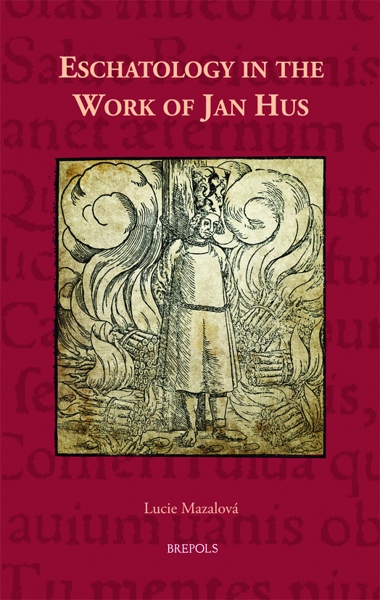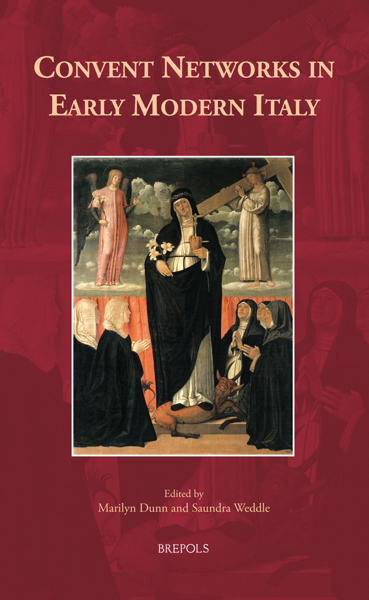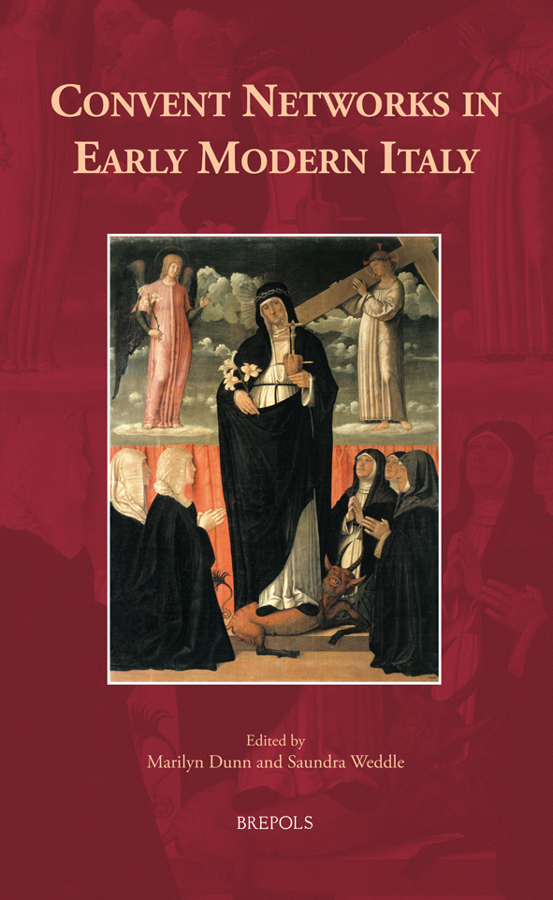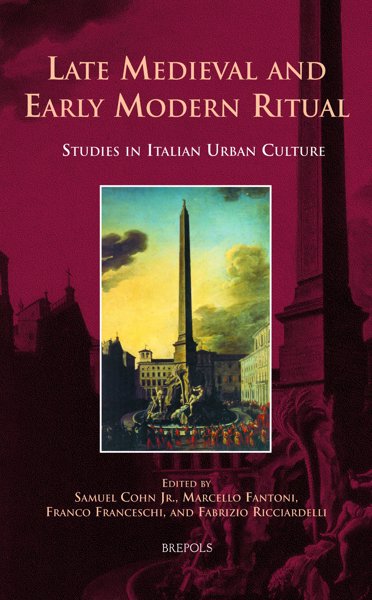
Convent Networks in Early Modern Italy
Saundra Weddle, Marilyn Dunn (eds)
- Pages: 352 p.
- Size:156 x 234 mm
- Illustrations:35 b/w
- Language(s):English
- Publication Year:2020
- € 95,00 EXCL. VAT RETAIL PRICE
- ISBN: 978-2-503-58607-6
- Hardback
- Available
- € 95,00 EXCL. VAT RETAIL PRICE
- ISBN: 978-2-503-58608-3
- E-book
- Available
Interdisciplinary essays that examine the connections of early modern Italian convents, and how these networks were expressed through texts, art, architecture, music, gift and favour exchange, real estate development, and other modes of expression.
“(…) the information provided by much of this book broadens our knowledge of a world which, although officially segregated, could play a significant part in the domains of religion, art, and even politics.” (Alastair Hamilton, in Church History and Religious Culture, 101/4, 2021 p. 597)
"Die Autorinnen kommen in ihren Aufsätzen zu neuen Forschungsergebnissen und weisen darüber hinaus auf noch bestehende Forschungsdesiderate hin. Des Weiteren wird dem Leser einen interessanten Einblick sowohl in das Klosterleben als auch in das Leben der italienischen Gesellschaft des 15. und 16. Jahrhunderts gewährt." (Angelina Stiefel, in Journal für Kunstgeschichte 27, 2023, Heft 2, p. 120-121)
Marilyn Dunn is an Associate Professor of Art History at Loyola University Chicago. Her publications on religious communities in seventeenth-century Rome have emphasized the role of women and nuns as patrons of art and architecture.
Saundra Weddle is a Professor at the Hammons School of Architecture at Drury University. Her publications address the form and function of convent architecture in Renaissance Italy, and include a translation of the chronicle of the Florentine convent, Le Murate.
The walls of early modern convents suggested the existence of absolute conditions that seldom existed in reality. While the built enclosure communicated the convent’s isolation from the world outside, connections between women religious and individuals or groups outside their communities extended into and from these houses, with each constituency exploiting these associations to serve its own aims.Likewise, the walls conveyed the presence of a homogeneous and unified community where, often, differences in status, power, and other interests led to the development of internal alliances and factions.
Building on an upsurge of scholarly interest in convent networks that previously has not been focused in a single volume, this collection of interdisciplinary essays examines how and why such associations existed. The collection examines personal, spatial, and temporal networks that emerged in, among, and beyond convents in Italy during the early modern period. These ties were established, cultivated, or even rejected in a variety of ways that influenced nuns’ devotional lives, their relationships with patrons, and their cultural engagement and production.
These essays cover the time period before and after the Council of Trent, permitting an analysis of convents’ responses to changing power dynamics, both inside and outside the enclosure. The book also engages a broad geographical and cultural range, with chapters focusing on the centres of Florence, Venice, and Rome, the courts of Urbino, Ferrara, and Mantua, and smaller cities across Northern Italy, offering unprecedented insights into early modern Italian convent life and its varied forms and modes of expression.
List of Illustrations
Acknowledgments
Introduction — MARILYN DUNN and SAUNDRA WEDDLE
Advising Women: Holy Women and Female Advisees in Early Modern Italy — JENNIFER CAVALLI
Nuns’ Networks: Letters from Suor Domenica da Paradiso at La Crocetta in Renaissance Florence — MEGHAN CALLAHAN
Pursuing a Savonarolan Thread: Patrons, Painters, and Piagnoni at S. Caterina in Cafaggio — CATHERINE TURRILL LUPI
Botticini’s Saint Monica Altarpiece and the Augustinian Network of Florence’s Oltrarno — LAURA LLEWELLYN
Identity, Alliance, and Reform in Early Modern Venetian Convents — SAUNDRA WEDDLE
Entrepreneurship Beyond Convent Walls: The Augustinian Nuns of S. Caterina dei Sacchi in Venice — LUDOVICA GALEAZZO
Musical Networks and the Early Modern Italian Convent — KIMBERLYN MONTFORD
Family Dynasties and Networks of Alliance in Post-Tridentine Convents in Rome and its Environs — MARILYN DUNN
Art as a Conduit for Nuns’ Networks: The Case of Suor Teresa Berenice Vitelli at S. Apollonia in Florence — SHEILA BARKER and JULIE JAMES
Index




